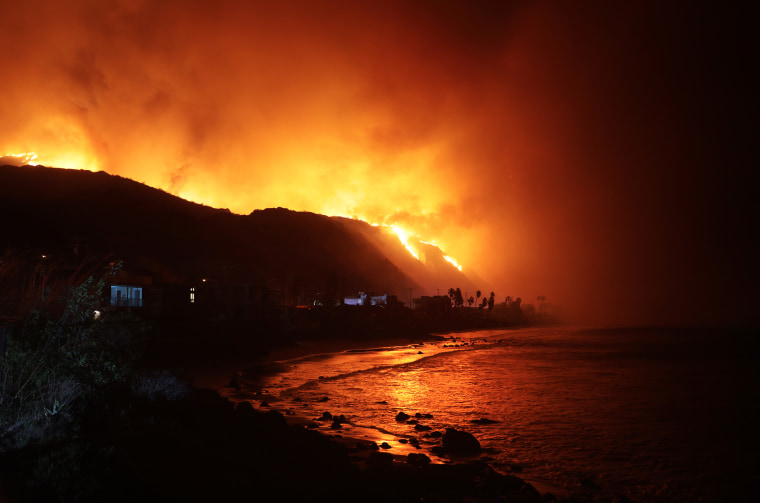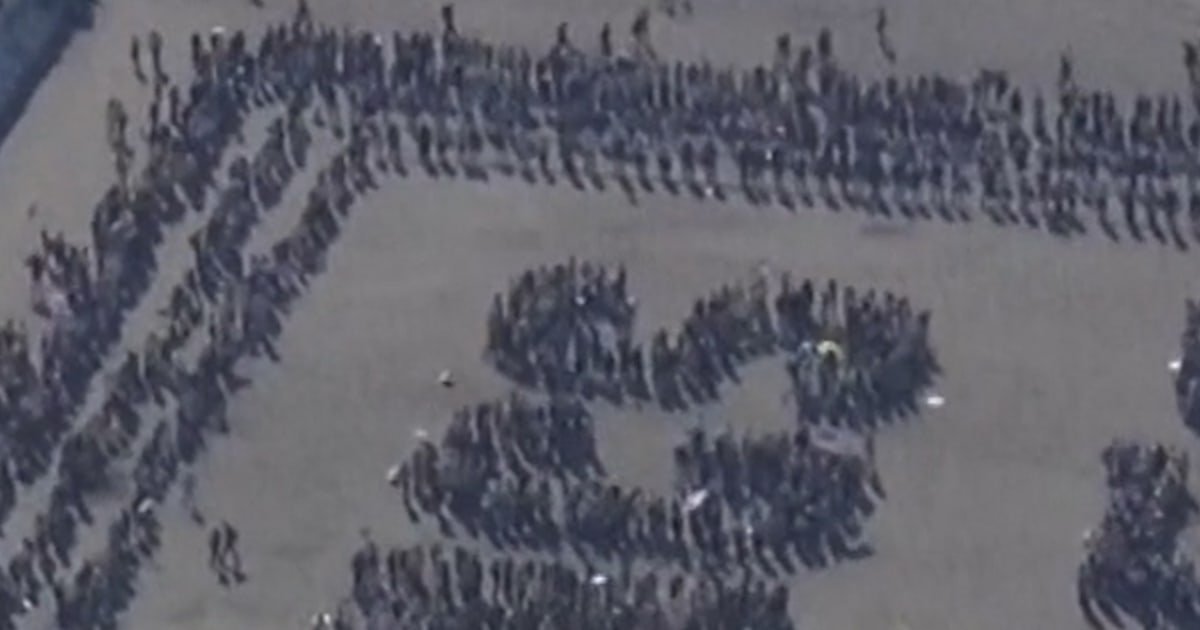A resurgence in offshore wind power is expected to keep fire risk high across the region through Friday morning, according to the National Oceanic and Atmospheric Administration’s Storm Prediction Center.
Santa Ana winds, which gain speed as they blow west and downhill from the Great Basin, are typical this time of year. But conditions are typically not completely dry as winds blow through the Southern California mountains toward the Pacific coast.
“Normally everything would be wet by now, which means there would be much less chance of an ignition causing a large fire that gets out of control like the one we’re seeing now,” Moritz said.
More than 15,000 acres have already burned in the Palisades Fire. The Eaton Fire, which started Tuesday night in the Pasadena and Altadena area, has consumed more than 10,000 acres. In Sylmar, the Hurst Fire has also grown to 500 acres, according to the California Department of Forestry and Fire Protection (Cal Fire).
All three fires have 0% containment and suppression efforts have faced challenging conditions with continued high winds.
Such devastating fires are expected to become more frequent as climate change amplifies the ingredients that help wildfires ignite and spread. Nearly all of California’s largest wildfires occurred in the last decade, according to Cal Fire.
Fires are usually sparked by hot, dry and windy conditions. Moritz said there isn’t enough research yet to know whether climate change is altering winds significantly, but he said global warming is already having an impact on precipitation and drought.

“Climate change is causing more erratic and extreme precipitation patterns,” he said. “That effect on precipitation is very important, because we are having wetter wet periods and drier dry periods and generally we are seeing this very erratic timing of precipitation.”
That means a region like Southern California could be hit by severe flooding at one time, as it did in March, and slide into drought months later. Lurching between those extremes puts people and their communities at greater risk, Moritz said.
“That’s the climate signal in all of this: that we’ve opened this window where we can have these large, devastating extreme events now,” he said.








